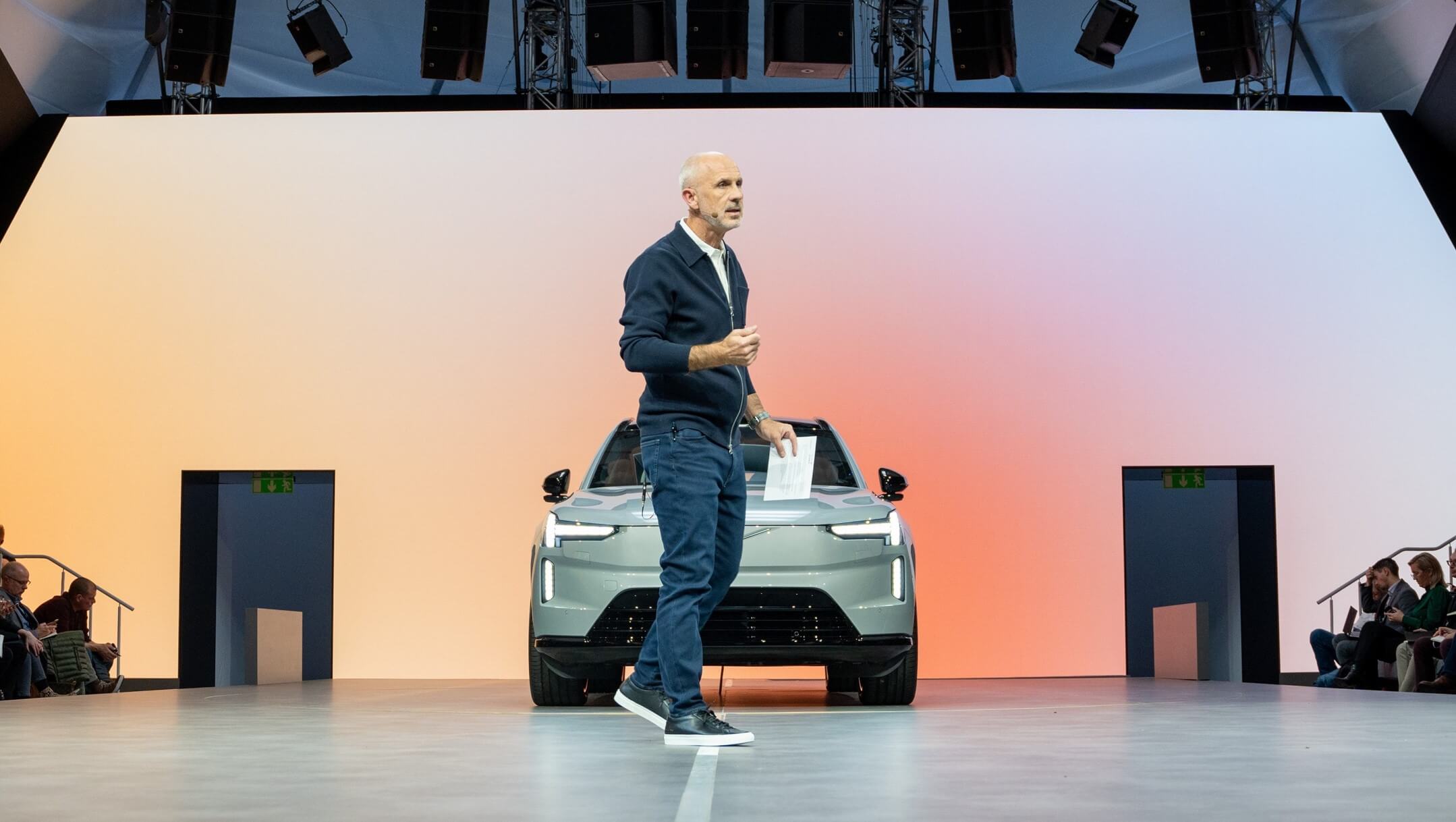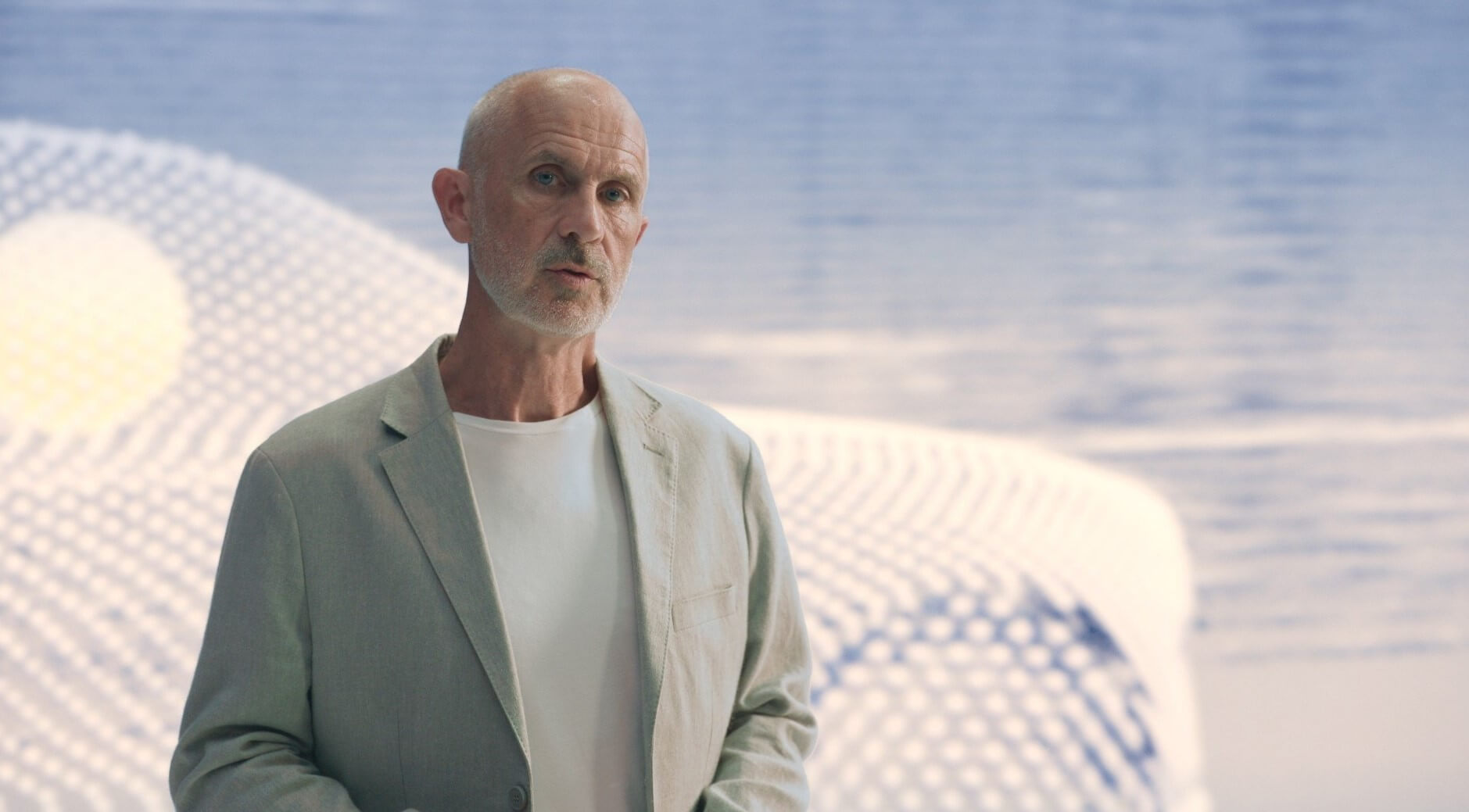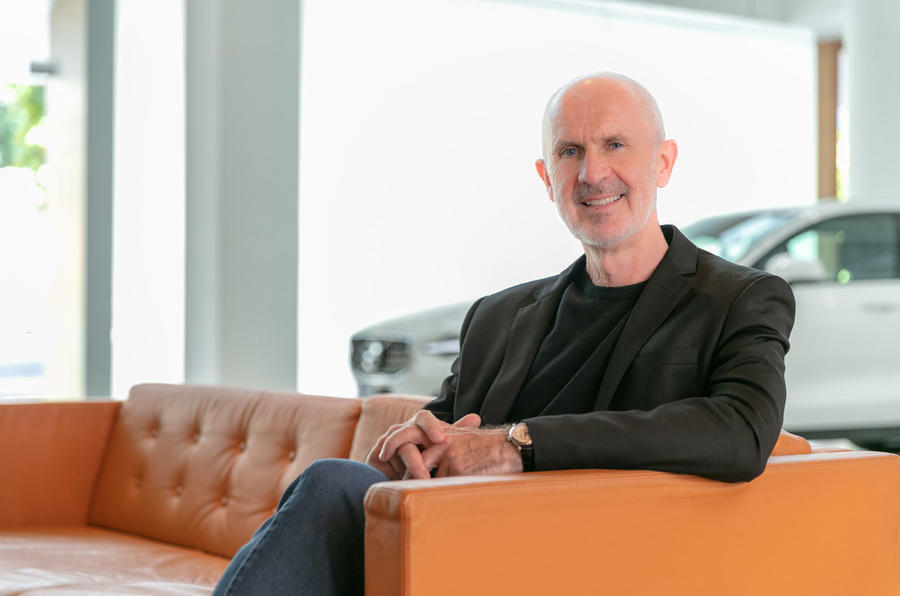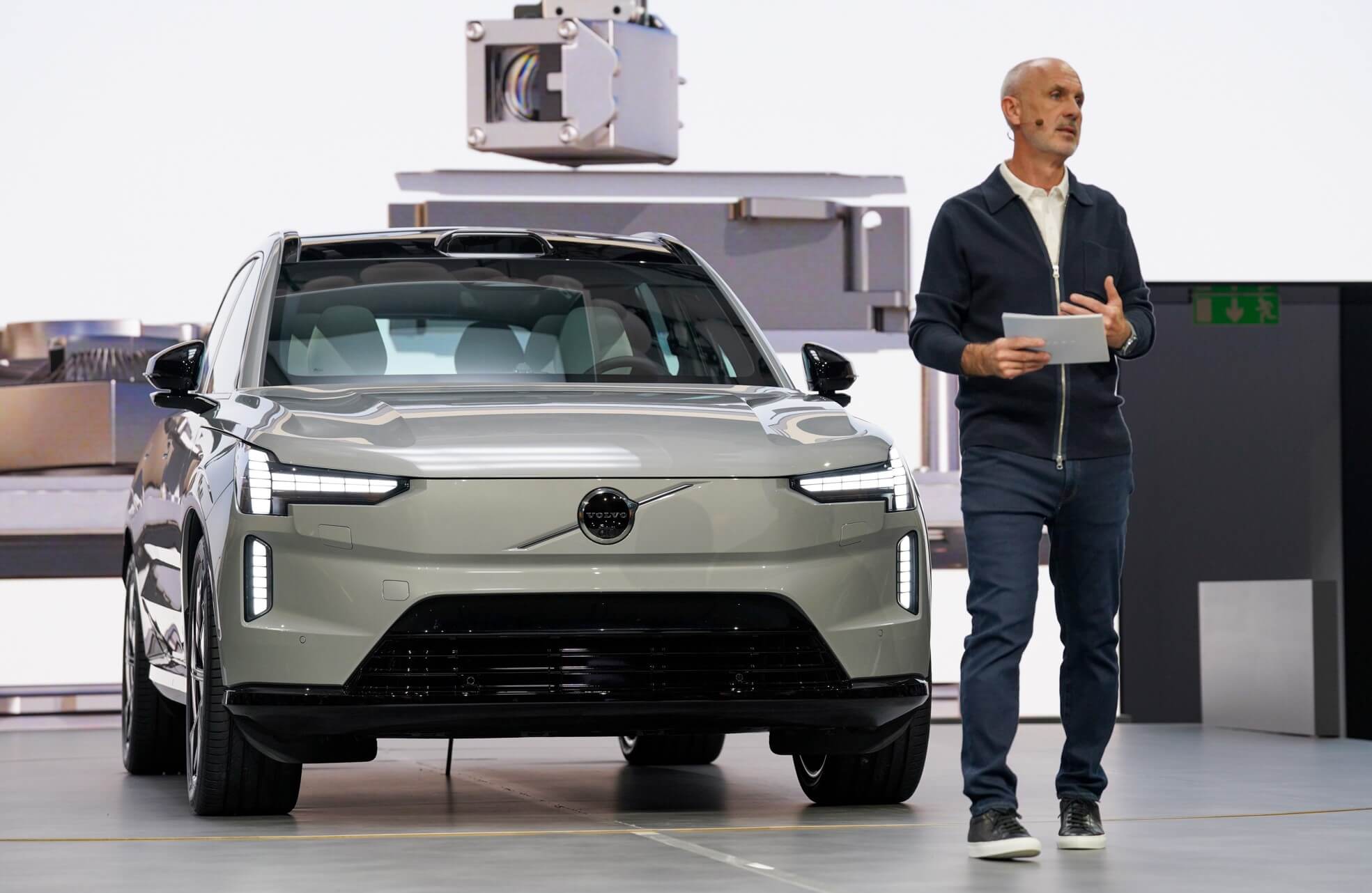Volvo CEO bets on advanced tech to enhance safety and lead industry change; aims to win younger buyers with EX30 SUV.
Volvo CEO Jim Rowan has said the car maker’s inhouse next-generation software will be its “three-point digital seatbelt” in driving future product and safety innovations.
The Briton was a surprise choice to replace Håkan Samuelsson at the Swedish firm in March last year, given all of his previous experience had been in the tech industry, most recently at Dyson.
Speaking to Automotive Daily Network partner Autocar for the first time, he said he wants the EX90 – Volvo’s new flagship and first bespoke EV – to lead the automotive industry’s technological charge.
The SUV – which is also key to Volvo’s target of selling 1.2 million cars (600,000 EVs) per year by 2025 – is described as a “software-driven” vehicle.
Thanks to a range of advanced sensors and technology, including the first lidar system fitted as standard on a production car, the EX90 is claimed to eventually be capable of “unsupervised driving”.
According to Rowan, the EX90 showcases how Volvo will work with partner firms but keep development of key technology in-house.
“Auto companies are starting to understand next-generation silicon and its importance in design,” he said.
The EX90’s “application layer” – meaning the lidar, radar, camera and other sensors – is powered by an Nvidia Odin chip that can do 254 trillion operations per second (TOPS).
This compares with about one TOPS for automotive chips a decade ago. “The software stack, connecting the silicon to the application layer, is the part we really care about,” said Rowan. “That for us is the three-point digital seatbelt.
“We have a team of more than 700 people who write the perception and sensor fusion software. In other cases, firms have outsourced that, but we think it’s absolutely core, so we’ve kept it in house.”
Rowan said that Volvo “won’t become slaves to having 40 different models” but will “look after the demographics that we think make sense”.
He continued: “We have customers who require different vehicles [and] different uses for vehicles. We will try to capture as much of that as we can.”
Key to this will be next-generation EV platforms. The EX90 uses the new SPA2 architecture, while an upcoming compact crossover that Volvo will reveal next year (tipped to be named the EX30) is likely to sit on the SEA platform for smaller cars.
That forthcoming urban-focused electric crossover will be key to Volvo’s push to reach younger, Generation Z buyers – a demographic that Rowan said “we’ve never really spoken to before”.
The demographic is also behind Volvo’s foray into subscription sales.
Rowan explained: “If you bring a small SUV that’s competitively priced, with subscription-based ownership that you offer for three months, at a reasonably low cost, they won’t even go to the dealership, they will buy online. I guarantee that.”
CEO Jim Rowan’s key challenges
Volvo EX90 launch
The new electric flagship SUV has been revealed with a dual-motor powertrain priced from £96,255 (AUD$167,500 – Australia pricing TBA), but deliveries aren’t due until 2024. Volvo is working on lower-powered versions and lesser trim levels, potentially including five-seat cars. Expect prices for those to start at around £75,000 (AUD$130,000).
Volvo’s planned growth
Volvo sold 483,304 cars in the first 10 months of last year, 15 per cent of which were EVs. The 2025 goal is 1.2 million, 50 per cent of them electric. That will require a major effort – especially with Volvo pushing further into the premium market.
The future of sedans
Volvo has now launched three electric SUVs: the Volvo XC40 Recharge, Volvo C40 Recharge and EX90. A smaller ‘EX30’ will follow in 2024. But it has yet to indicate plans for electric saloon or estate models.
Sustainability
Volvo has a goal to make its production facilities carbon-neutral and to reduce the life-cycle CO2 emissions of each car by 40% compared with 2018 levels by 2025.







